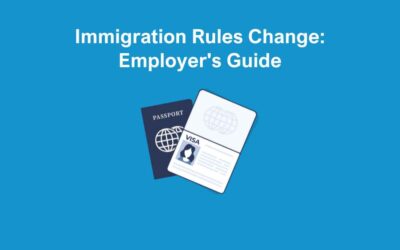Conducting a pregnancy risk assessment is essential to ensure the health and safety of the pregnant employee and her unborn child. This assessment identifies potential workplace risks to pregnant employees. Neglecting to conduct one could result in serious repercussions for your business, such as workplace injuries, employment tribunal claims, and damage to your reputation.
Here, we provide a step-by-step guide to help you create an effective assessment for your workplace.
What is a Pregnancy Risk Assessment
A pregnancy risk assessment is a process designed to evaluate workplace conditions and tasks to ensure they are safe for pregnant employees. It identifies potential hazards that could pose a risk to the health and safety of the expectant mother and her unborn child. This assessment is a legal requirement under UK health and safety regulations, aiming to prevent harm and provide the necessary adjustments to support the wellbeing of pregnant employees. It is an essential step for employers to meet their duty of care and comply with the Management of Health and Safety at Work Regulations 1999.
The pregnancy risk assessment involves reviewing the employee’s role, the physical and environmental aspects of the workplace, and any specific factors related to pregnancy, such as fatigue or physical limitations. By addressing risks like heavy lifting, prolonged standing, or exposure to hazardous substances, employers can implement measures to create a safer work environment. Regular reviews of the assessment are also critical, as the nature of risks may change as the pregnancy progresses, ensuring ongoing protection and support.
Why is it important?
Pregnancy brings unique challenges that may require adjustments to routines, workplaces, or activities. Conducting a thorough pregnancy risk assessment helps ensure safety while maintaining productivity and well-being.
Step-by-Step Guide to Creating a Pregnancy Risk Assessment
Step 1: Understand the Scope of the Assessment
The first step in creating this document is to define its purpose and scope. Consider the environment or situation where the individual will spend significant time, such as:
- Workplace: Assessing risks from physical tasks, exposure to chemicals, or prolonged standing.
- Home Environment: Identifying hazards like slippery floors or lifting heavy objects.
- Healthcare: Review and follow the medical advice and guidelines shared by their doctor or midwife regarding their pregnancy
Step 2: Identify Potential Risks
List all the potential risks that could affect a pregnant individual. These may include:
Physical Risks:
- Heavy lifting
- Prolonged standing or sitting
- Slippery or uneven surfaces
- Repetitive motions
Environmental Risks:
- Exposure to chemicals, fumes, or toxins
- Noise pollution
- Extreme temperatures
PPE
- As part of the pregnancy risk assessment, evaluate whether pregnant employees or new mothers require additional PPE.
Suitable Facilities
-
Ensure employees have access to appropriate and adequate facilities to meet their needs. For instance, a new mother who is breastfeeding may require a suitable place to express milk comfortably and safely.
Step 3: Consult with the pregnant employee
Connect with new mothers and pregnant employees in your workplace to ensure their well-being and address any needs they may have. Engage in open, supportive conversations to understand if they have any conditions, concerns, or circumstances that could impact their work responsibilities. Offer a safe space for them to share without fear of judgment or negative consequences. Use this feedback to make necessary adjustments or accommodations that promote their comfort and productivity.
Step 4: Consult With Relevant Workplace Professionals
As part of the pregnancy risk assessment, engage with a safety representative or trade union official to thoroughly review the control measures needed to ensure a safe and supportive environment. Their expertise can help identify potential risks and recommend practical adjustments to protect the health and well-being of pregnant employees. Collaborating with these professionals ensures compliance with regulations while fostering a workplace that prioritises safety.
Step 5: Develop an Action Plan
For each identified risk, create a mitigation plan. This should include:
- Risk Mitigation Measures:
- Adjust work tasks to minimise physical strain.
- Provide ergonomic furniture and equipment.
- Ensure proper ventilation to reduce exposure to harmful substances.
- Support Systems:
- Offer flexible work hours or remote work options.
- Encourage open communication about needs and concerns.
- Emergency Response Plans:
- Establish clear protocols for medical emergencies.
- Ensure access to emergency contact information.
Step 6: Document the Assessment
Create a written report detailing the findings and recommendations of the pregnancy risk assessment. This document should include:
- A summary of identified risks
- Mitigation strategies
- A timeline for implementing changes
- Roles and responsibilities of involved parties
Having a documented assessment ensures accountability and provides a reference for future evaluations.
Step 7: Review and Update Regularly
Pregnancy-related needs and risks can change over time. Set a schedule to review the pregnancy risk assessment at key stages, such as:
- The start of each trimester
- After significant changes in the environment or role
- Following medical consultations
Legal Considerations for Pregnancy Risk Assessments
If it is not possible to control or eliminate a risk to a pregnant employee or new mother, you must adjust their working conditions or modify their hours to ensure the risk is avoided. Should this adjustment prove unfeasible, the Employment Rights Act 1996 requires that they be offered suitable alternative work that is safe and appropriate for their condition. If no suitable alternative work is available, further measures, such as paid leave, may need to be considered to safeguard their health and well-being.
Pregnancy Risk Assessment Template
Contact our HR Consultants for your free pregnancy risk assessment template.
What rights do pregnant women and new mothers have in the workplace?
Pregnant women and new mothers have important health and safety rights in the workplace. These include paid time off for antenatal care at their usual rate of pay, maternity leave, and either statutory maternity pay or maternity allowance. Additionally, they are protected against unfair treatment, discrimination, or dismissal during this period.
Pregnant employees also have the right to begin maternity leave early if they are on sick leave during the four weeks leading up to the baby’s birth. Ensuring these rights are respected helps create a supportive and compliant workplace environment.
What is pregnancy and maternity discrimination?
The primary legislation addressing pregnancy and maternity discrimination in the UK is the Equality Act 2010. Discrimination occurs when someone is treated unfairly due to pregnancy, maternity leave, breastfeeding, or related reasons, which are all protected under this act.
The Equality Act prohibits several forms of unlawful discrimination, including direct discrimination—treating a woman unfavourably because of her pregnancy, maternity, or protected period. It also includes associative and perceived discrimination as well as victimisation, ensuring comprehensive protection for affected individuals.
Conclusion
A well-executed pregnancy risk assessment is essential for ensuring the safety and well-being of pregnant individuals. By identifying and addressing potential risks, you create a supportive environment that fosters health and productivity.
Understanding the steps to create a pregnancy risk assessment equips you to better support your employees and ensure their safety. Start today and ensure peace of mind for everyone involved.
Read our latest blogs for comprehensive HR advice on pregnant employee rights, or advice on offering enhanced maternity pay.







